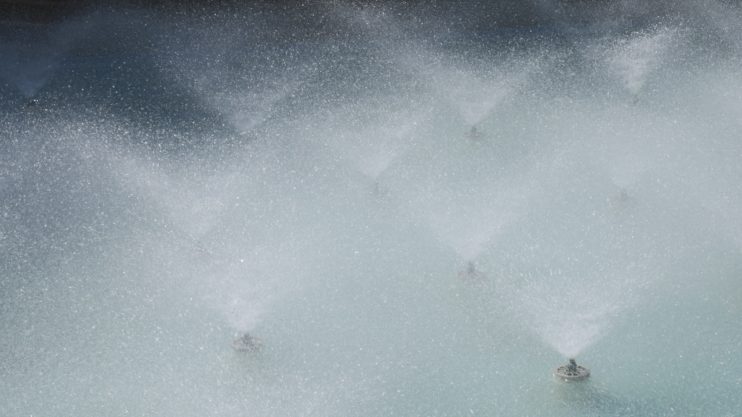How to Winterize Your Home Sprinkler System: Step-by-Step Guide for Sacramento Homes

As summer turns to autumn, homeowners around Sacramento and nearby regions like Roseville, Citrus Heights, and Rancho Cordova are turning their attention to all the things that need to be done to prepare their homes for the colder months ahead. Sacramento experiences mild winters, but freezing temperatures can still occur, causing severe damage to sprinkler systems, homes, and irrigation pipes, leading to costly repairs.
Failing to prepare your outdoor sprinkler system can set you up for trouble later. You can follow this step-by-step guide for sprinkler system winter maintenance to keep your sprinkler system in top condition and protect your home irrigation system in winter.
Why Winterizing Your Sprinkler System is Important?
Before we get into the “how,” let’s take a look at a few reasons why you should winterize your sprinklers
- Prevent Damage - Water tends to expand upon freezing. So, water shouldn’t be left in the pipes because it can crack, burst, or damage them when frozen.
- Avoid Costly Repairs - The damaged pipes lead to costly repairs. Repairing broken sprinkler pipes and valves due to freezing can be expensive and time-consuming. Proper sprinkler system winter maintenance can help you avoid unnecessary costs and keep your system running efficiently.
- Maintain Warranty - Many sprinkler manufacturers in Sacramento provide warranties. However, these warranties can become void if you neglect routine maintenance like winterization.
Read more if you have to face the issue of Frozen/Burst Pipes!
| Need Help Winterizing Your Sprinkler System in Sacramento? Contact Ace Plumbing Today |
Which Tools Are Needed for Sprinkler Winterization?
Before starting the Sacramento sprinkler system winterization, you must know about the tools required during the process.
- Air Compressor: In some cases, you can winterize the sprinkler system without an air compressor. However, blowing out the sprinkler lines with compressed air is the best way to remove the remaining water and prevent freezing damage.
- Insulation Materials: You must use pipe insulation or foam covers to protect above-ground pipes and other exposed components.
- Valve Covers: Some sprinklers have drain valves that are meant to clear water out of the system; these valves may be automatic or manual. Covering these valves with insulated covers helps protect them from temperature drops and freezing conditions.
How to Winterize Your Sprinkler System?
1. Shut Off the Water Supply
Before you start the winterizing process, make sure that no water enters the sprinkler system while draining. Therefore, you must locate the main shutoff valve and turn it off to stop water from flowing into the pipes.
2. Start the Draining Process
You must know if your sprinkler system has manual or automatic valves to drain water from your pipes. If it has manual drain valves, you can open them to remove as much water as possible from the pipes. Some systems have automatic drain valves that activate when the water pressure drops.
3. Blow Out the Remaining Water
You must attach an air compressor to the system and use low-pressure air to push out any remaining water. However, you have to be careful because using too much pressure can damage the pipes. So, once the water stops flowing, interrupt the flow of compressed air to prevent your system from further damage. You can also hire a professional to make sure no mistakes are made, and the winterizing process goes smoothly.
4. Insulate Exposed Pipes and Valves
You can use foam pipe insulation and valve covers to protect exposed components from freezing temperatures.
Some Common Mistakes to Avoid During Sprinkler System Winterization
- If you don’t completely drain the system, the leftover water can freeze and cause damage.
- Sometimes, using too much air pressure can break sprinkler heads or damage pipes.
- If you forget to shut off the water supply, the water left in the system can cause cracks and leaks.
Here’s your guide on Troubleshooting Your Home Sprinkler System.
| Download Our FREE Winterization Checklist! |
Takeaway
It can be tempting to winterize sprinklers on your own. However, leaving steps out or forgetting something important during the process is natural when you don’t do this sort of thing often. That, in turn, can lead to breaks and repairs later. There’s something else to consider as well: using compressed air to blow out your sprinklers is effective, but it’s also a good way to hurt yourself if you don’t know what you’re doing.
Hiring a professional is a smart choice if you’re unsure about the process or want to avoid the risk of costly mistakes.
Take Care of Your Sprinkler System Before It’s Too Late - It’s Best to Hire a Professional
If you’re looking for a reliable sprinkler system winter maintenance service in Sacramento or nearby areas, you’re at the right place.
At Ace Plumbing, we provide expert winterization services for your sprinkler system. We serve Sacramento, Roseville, Citrus Heights, Rancho Cordova, and surrounding areas and are known for high-quality services at affordable prices. We also take care of all plumbing, heating, air conditioning, and air quality issues and provide effective repairs and solutions.
Check our New Homebuyer’s Plumbing Checklist. Call us at (916) 455-4548 to book your services!
Frequently Asked Questions
Can I Winterize My Sprinkler System Without an Air Compressor?
Yes, if your system has manual drain valves, you can use them to drain the water. However, using an air compressor is the most effective method to remove all water.
Do I Need to Winterize My Sprinkler System in Sacramento’s Mild Winters?
While extreme freezes are rare, it only takes one freezing night to cause damage. Preventive maintenance is always the best.
How Much Does Professional Sprinkler Winterization Cost?
The Sprinkle winterization costs may vary depending on the size of your system. You can contact us for a quote.



